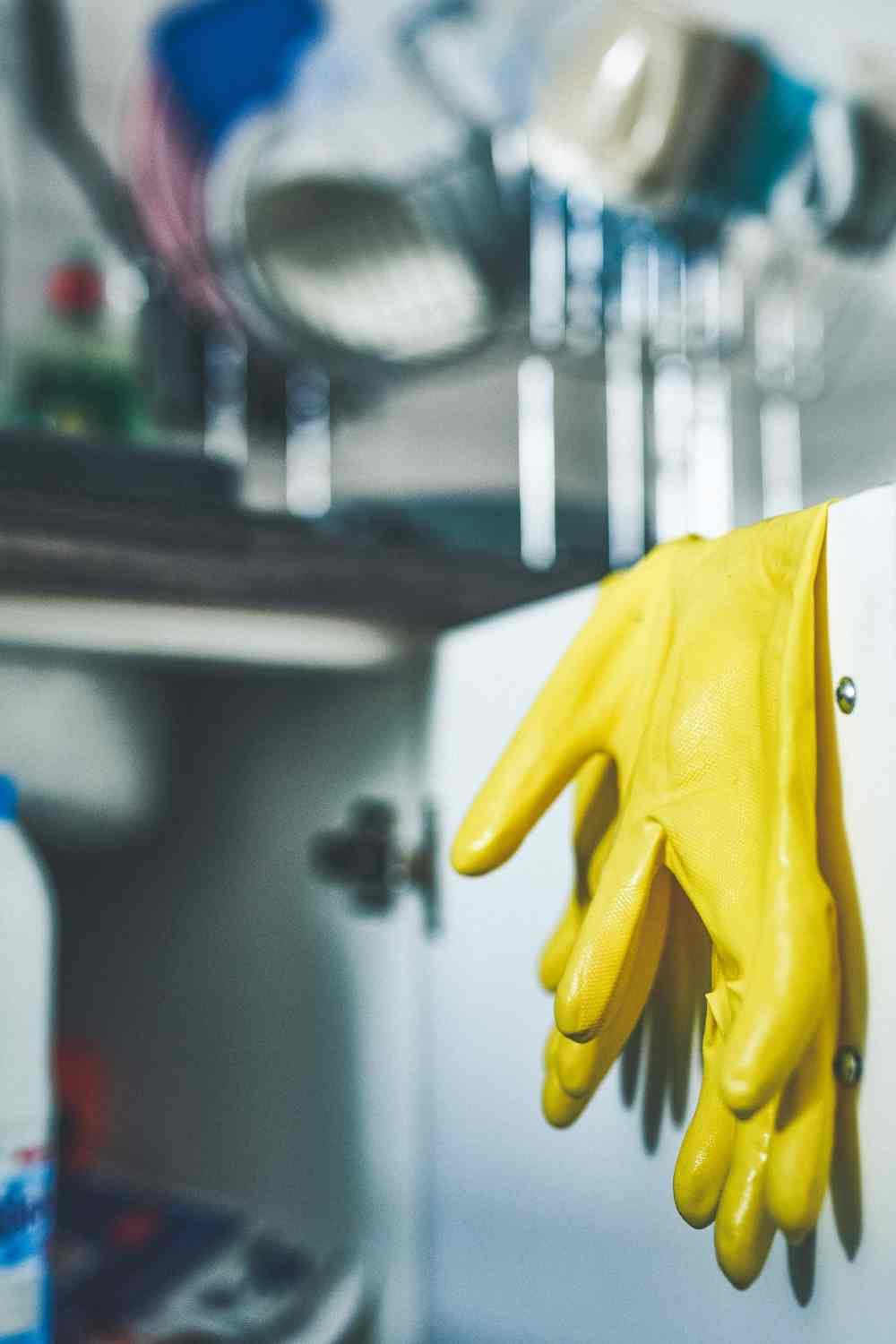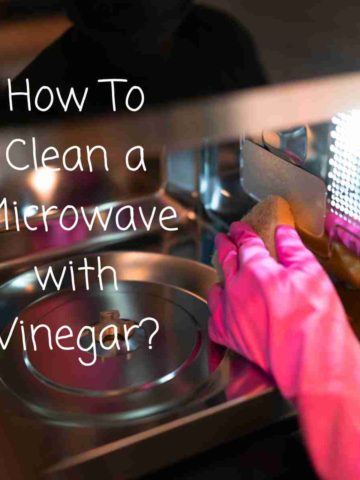To clean your kitchen sink like an expert, you just need to follow a few basic steps. Once you've followed this procedure, you'll have a sparkling sink on a consistent basis. Every night before going to bed, we prefer to make sure our sink is completely clean.

Instructions on How to Clean Your Kitchen Sink Like a Professional
Jump to:
1. Give Your Sink a Thorough Rinse
Ideally, you should finish off any dishes before cleaning out your kitchen sink. After that, you should give the sink a good rinse. Before you begin cleaning your kitchen sink, make sure that any food, beverages, and debris have been washed away. After you've rinsed, be sure to empty up the drains as well.
Even if you don't have time to undertake a thorough cleaning, rinsing your sink to remove food and dirt is an excellent everyday habit. Acid and salt from meals may cause the finish on your stainless steel sink to get damaged.
Additionally, it makes cleaning stains on other kinds of sinks more difficult. Your nighttime dishwashing routine should include thoroughly rinsing the sink and draining it.
2. Sprinkle Baking Soda All Over the Sink
After you've cleaned out your sink of any visible food and debris, add baking soda to the sink to deodorize it. Don't be afraid to cover the whole sink with your hands.
You may get canisters of baking soda in the form of this, which sprinkle:
If you like, you may drill a few holes on the top of a mason jar to hold the beads. If you want to use a mason jar, you may want to try adding a few drops of your favorite essential oils to the baking soda before you shake it up. It will fill the whole kitchen with a wonderful scent. Lemon is a favorite of ours!
3. Squirt Dish Soap on a Clean Sponge or Cloth
Once you have a layer of baking soda coating your sink, you are ready to begin washing it clean. You may add a tiny quantity of dish soap to your sponge or towel to make washing a little bit simpler.
We use blue Dawn dish soap for just about everything and it's fantastic!
4. Get to work scrubbing!
Despite the fact that baking soda is abrasive, it is not sufficient to damage stainless steel or other kinds of sinks. Scrub the inside of your sink from the top-down, working your way down to where the drain is located. The most effective approach to clean your kitchen sink is to scrub it in a circular motion around the whole sink surface.

5. Cleanse and disinfect
After you've finished cleaning and sanitizing your kitchen sink, you'll want to disinfect it. After you've finished cleaning your sink, give it a thorough rinse to ensure that everything you've cleaned is completely rinsed away.
Following that, wet some paper towels in white vinegar and use them to line the inside of your sink. Allow the towels and vinegar to rest in the sink for approximately 20 minutes, covering the whole surface area. Vinegar has antibacterial properties and is a natural sanitizer. Additionally, it might aid in the removal of hard water stains.
6. Clean Faucets
Now that your sink basin has been thoroughly cleaned and sanitized, don't forget to clean the faucet and handle as well. Faucets and sink handles may be cleaned by soaking them in a moderate detergent solution. It should be possible to use dish soap or a surface cleaner with a sponge.
After cleaning your faucets, wipe them down with a towel soaked in vinegar to disinfect and sterilize these often touched surfaces.
7. Deodorize the Disposal or Drain
Foul-smelling trash disposal or drain will not blend well with a newly cleaned kitchen sink, trust us. If you have a garbage disposal, pour around 12 cups of baking soda down the disposal and then follow it up with 1 cup of vinegar. For a few minutes, the liquid will froth and bubble. Simply use a bit less when cleaning a drain.
After washing with hot water after using baking soda and vinegar, repeat the process. Using this method, you should be able to disinfect and deodorize your drain or disposal.
Take a moment to appreciate your newly cleaned sink from a safe distance.




